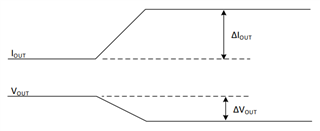I am working on a worst-case circuit analysis using the extreme values analysis, and I am trying to understand how the variation in Vfb affects the voltage regulation.
In the datasheet, I see a max range of 1.174V to 1.246V. Below that, I see another section named "Load Regulation" that lists 18mV across the whole range.
Should I be using the range of Vfb in the Vout equation (1) to determine min/max regulation? Or should I be using this "Load Regulation" metric? It is unclear to me what the "Load Regulation" means exactly in this context.


